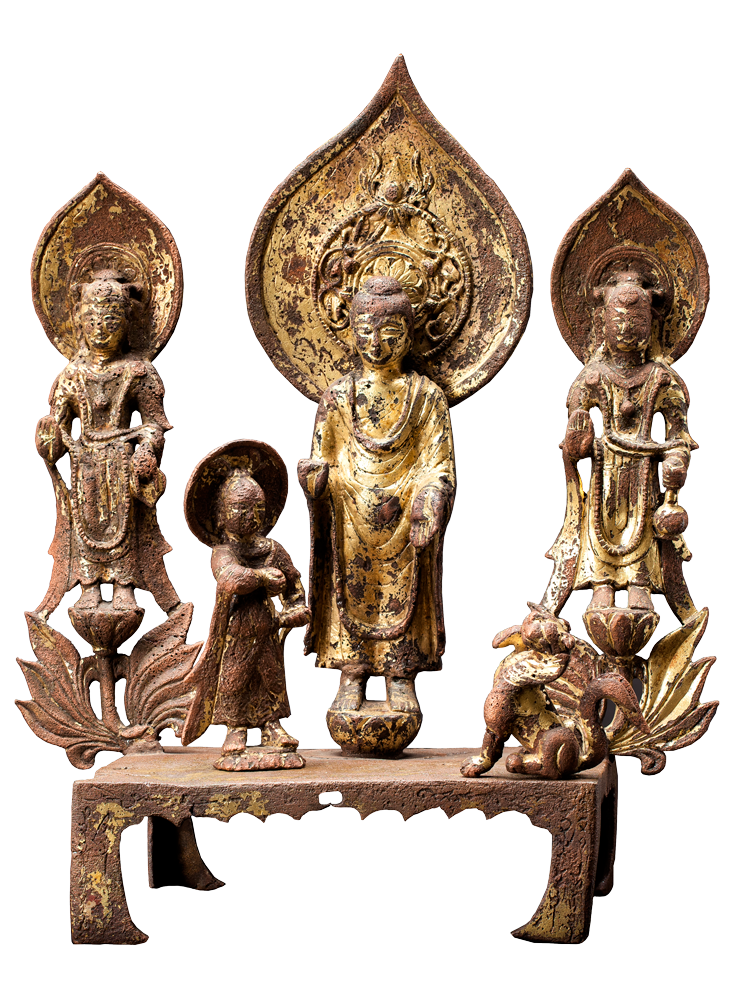Buddhish chancel

The chancel was probably made in China in the period of Northern Dynasties Zhou and Qi in the second half of the VI century. Later it came to the territory of the Uyghur Khaganate, that occupied in its period of prosperity provinces of north-west China and eastern part of the Middle Asia. After it was defeated by Yenisei Kyrgyz in the IX century came to the territories of the Minusinsk Hollow. The bronze chancel is a low rectangular table on four legs and with five figures of buddhish pantheon on it. The central figure is a standing Buddha. The right hand of Buddha is folded in an “Abhaya” gesture – bent at the elbow, the palm is unfolded out, fingers extended straight up. This gesture symbolized fearlessness, confidence, giving defence, goodwill. The left hand is showed in a gesture “Varada” – the hand with the unfolded out palm directing down – objectifying greeting, mercy and compassion. On right and left sides from Buddha are standing two figures of bodhisattvas – the ones who refused of reaching nirvana, the main aim of buddhish cult in sake of all living creatures. Bodhisattvas are holding in their hands sacral objects – a pitcher and a vessel for fragrance. On a support from two opposite sides two writings are applied: in Sogdian alphabet on the front side of the chancel, in Chinese characters – on the back side.
Exhibit’s purpose of use – a private nature of performing a buddhish ritual that do not demand building a special cult construction, and also the convenience of moving by pilgrims and missionaries such chancels encouraged their wide expansion.
Uniqueness. Crafting many-figured chancels was widely practiced in China during the IV-VI centuries.
